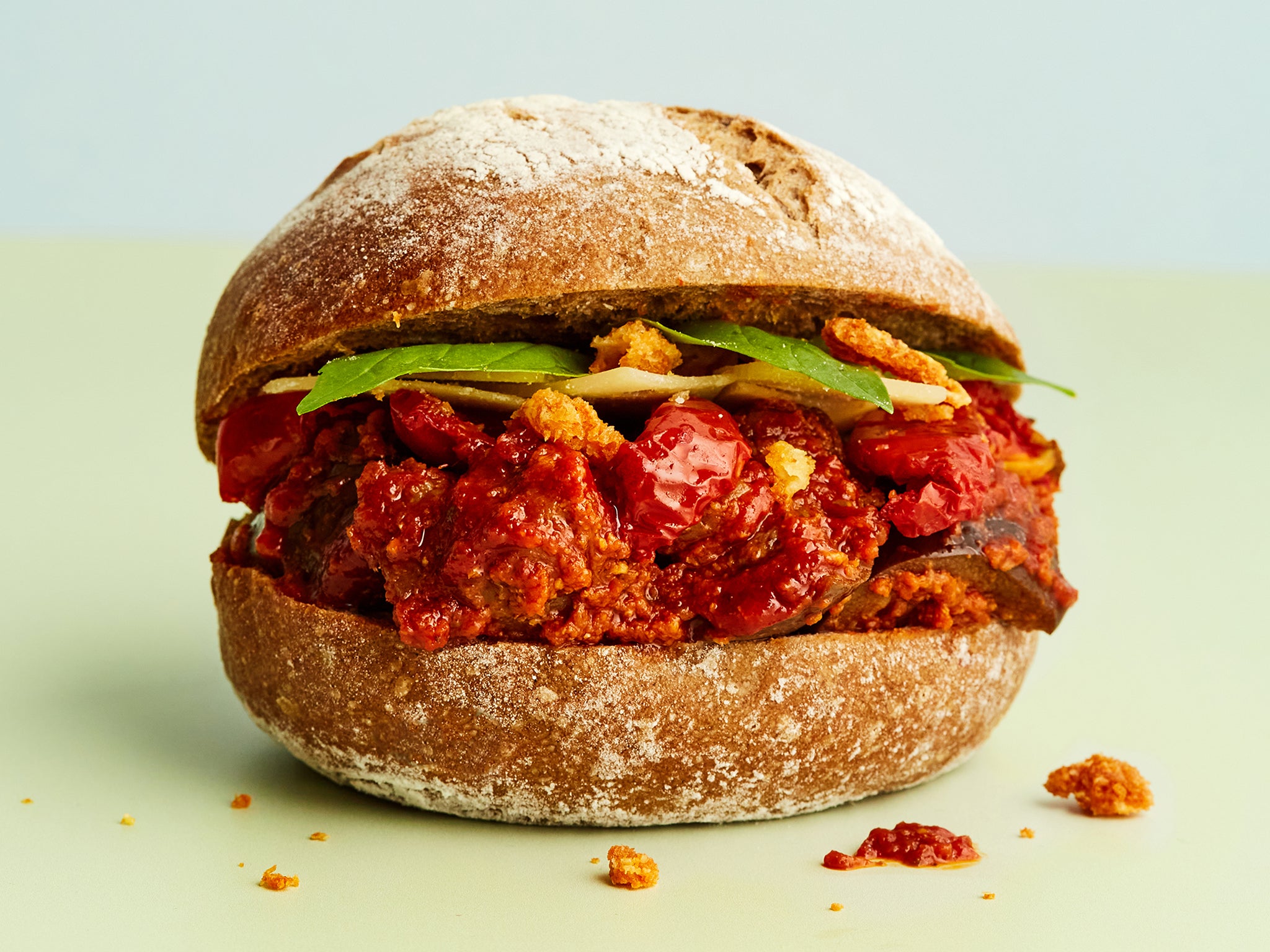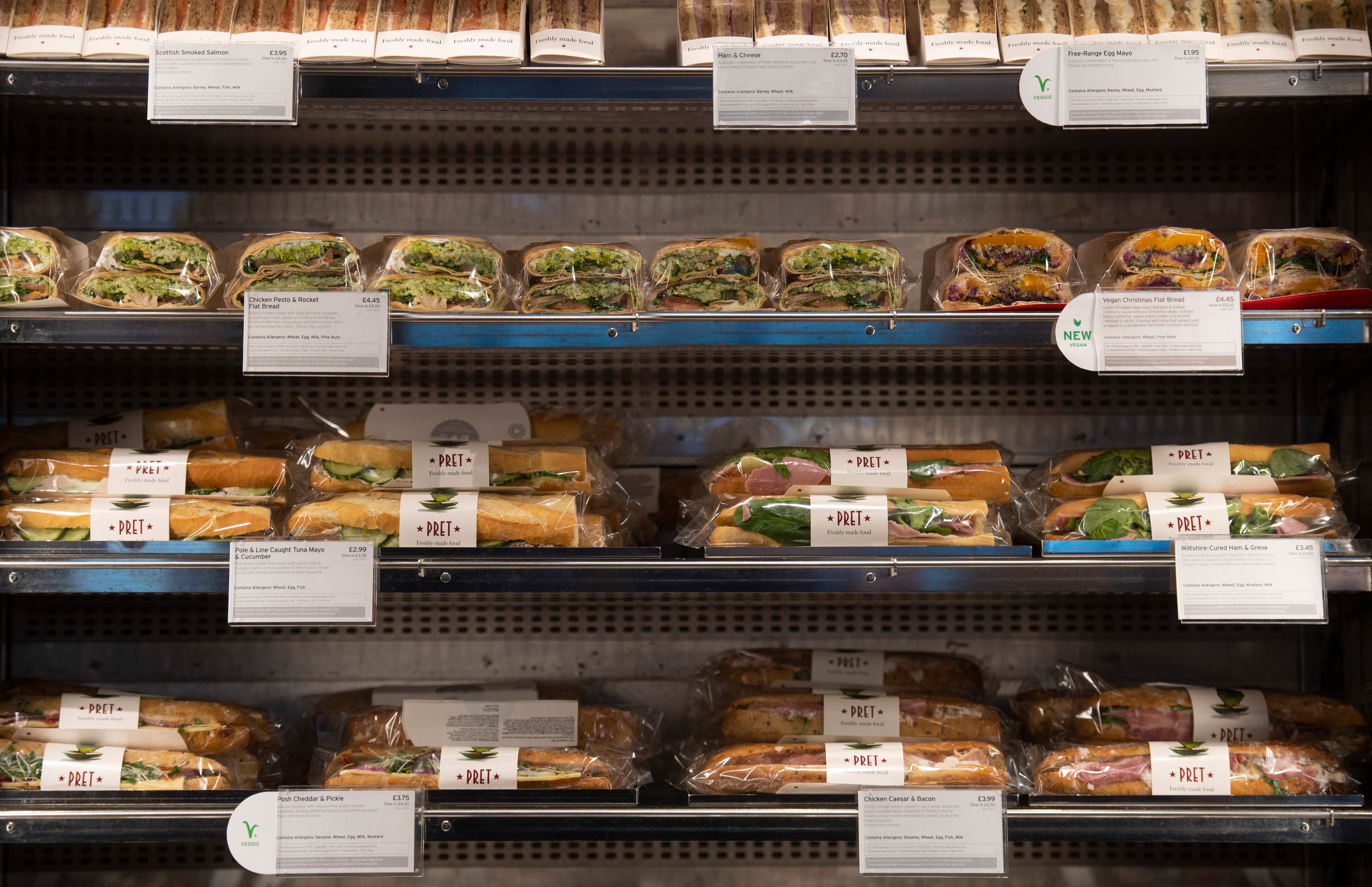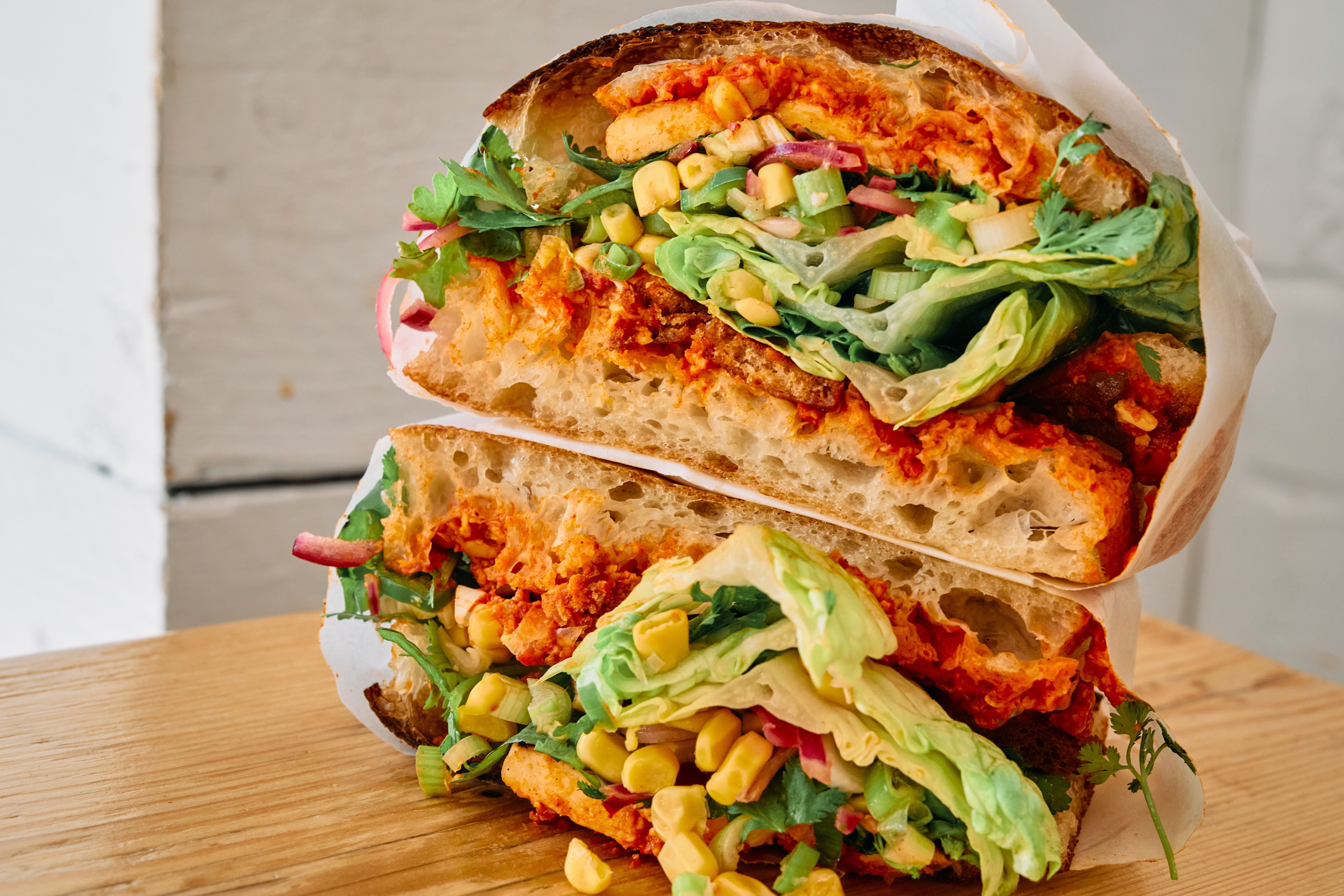Best thing since sliced bread: How the sandwich went from humble to haute
From pre-packaged sarnies in M&S to whole shops dedicated to weird and wonderful baps, the sandwich has had a pretty significant glow-up in the past decade, and Alice Peacock is here for it

Your support helps us to tell the story
From reproductive rights to climate change to Big Tech, The Independent is on the ground when the story is developing. Whether it's investigating the financials of Elon Musk's pro-Trump PAC or producing our latest documentary, 'The A Word', which shines a light on the American women fighting for reproductive rights, we know how important it is to parse out the facts from the messaging.
At such a critical moment in US history, we need reporters on the ground. Your donation allows us to keep sending journalists to speak to both sides of the story.
The Independent is trusted by Americans across the entire political spectrum. And unlike many other quality news outlets, we choose not to lock Americans out of our reporting and analysis with paywalls. We believe quality journalism should be available to everyone, paid for by those who can afford it.
Your support makes all the difference.When Max Halley opened north London favourite Max’s Sandwich Shop in 2014, the biggest question on his mind was how to get people to take the sandwich more seriously. Having watched burgers and fried chicken evolve from something you would buy at a fast food shop or in a football stadium into “something a bit more gastronomic”, he figured the sandwich was up next for a revamp.
The sandwich as a staple meal was nothing new, but, as British Sandwich Association founder and director Jim Winship says, the past few decades have seen the £7bn-a-year industry “grow up”. The boundaries have broadened on what’s considered a sandwich – it’s not uncommon to have our favourite plated meals packaged into a carbohydrate carrier for our consumption. A recent item on Dalston bakery The Dusty Knuckle’s menu was a katsu aubergine sandwich, while Tesco has the “Sausage, Bacon and Egg Triple”; a full English breakfast tucked into slices of malted bread.
Innovation, spurred on by global influences and a widening in the availability of ingredients, is easier in the sandwich bars, as opposed to the manufactured grab-and-go sandwiches found in the likes of Pret. “They’re a much more difficult product to produce, in a way,” Winship, in his early 70s, explains. “You have to find combinations of ingredients that will stay fresh and survive being moved around. There’s a lot of technology that’s going into that area generally, to make sure the product is in perfect order when you get it.”
The first of Britain’s modern day commercialised sandwiches is commonly thought to have been Marks and Spencer’s salmon and tomato sarnie, the first of which sold back in 1980. The pre-packed sandwiches, trialled in five stores, proved a huge success and by 1982, M&S had expanded the range into 140 stores. The success of the packaged sandwich business model proved irresistible to others in the takeaway food business and Pret A Manger, the first of which opened as a delicatessen in Westminster, launched in 1986.

Today, the name Pret is almost synonymous with sandwiches. The chain has 419 stores across the UK and 76 varieties of sliced bread sandwiches, baguettes and rolls across the Pret and Veggie Pret menus. Katherine Bagshawe, Pret’s UK food and coffee director, says menu items are sorted into four categories: Classic, Indulgence, Quirky and Perceived Health.
“I think you have to have those buckets,” Bagshawe says. “There will always be a customer who will want a tuna and mayonnaise baguette, or a cheese and ham sandwich. That will always be what it will be, and I think you just have to make sure that that’s fantastic. But I think because people’s tastes are changing and expectations are changing, you do also need to have these really international flavours coming in as well.”
Customers’ loyalty to old favourites is clear from the data; Pret’s chicken caesar and bacon baguette has been their best-selling product so far this year, followed by the pole and line caught tuna and the posh cheddar and pickle baguettes. However, the chain is big on innovation and brings out a raft of new menu items every season. Pret’s product development process works in stages, Bagshawe explains. The team comes together to discuss flavour profiles, trends and product ideas, alongside internal and external insights. Developers armed with new ideas head off to create kitchen samples; home-style versions of the proposed product, which the product development and food technician teams test before picking the cream of the crop.
As the number and complexity of sandwich fillings grow, consumers seem more willing to splash the cash. An unpacking of data from MealTrak, the market dataset for the Out of Home Food & Drink Industry, shows that while the average cost per item for food to go has remained pretty much the same over the last 5 years at around £3.50, the average person’s spend on sandwiches has increased. Consumers panelled in 2022 reported a willingness to spend 15 per cent more on a sandwich, a category inclusive of wraps, rolls, baguettes and flatbreads, than those surveyed in 2018. The average spend on hot sandwiches specifically has forged ahead by more than 50 per cent, from £3.60 to £5.60.
Just before I opened the sandwich shop, my friends in the restaurant business were like, ‘well how are you going to persuade people that a sandwich can be a meal, that they can have it for dinner? And I said, well I’ll just only open at night, so if they want one, it will have to be their dinner
Menus at the likes of Pret and Waitrose have grown to adopt the type of sandwich inspiring a bigger spend, but others, such as The Dusty Knuckle, have this as their bread and butter. A bakery, cafe and baking school with outposts in Dalston and Haringey, The Dusty Knuckle is beloved for take-home bread as well as its huge, salty slabs of focaccia packed with a changing menu of sandwich fillings.
Rebecca Oliver, Max Tobias and Daisy Terry launched The Dusty Knuckle in 2014 as a bakery and social enterprise. Max had been working in gang prevention for some time and wanted to bring an element of this into the business, which prompted a partnership with Switchback, a prison rehabilitation charity that offered young men leaving prison mentoring and the opportunity to work.
It was around six to eight months after they started making bread, that they sold their first sandwich - a sourdough number with charred red onions and bacon. Rebecca, who was senior chef at Moro before The Dusty Knuckle was born, describes these first creations as “normal sandwiches, made a bit posher”.
These early sandwiches largely had an Italian flavour, as that’s what Rebecca knew and loved cooking. But different chefs came and threw different flavours in the mix as the business grew, and when they switched up their sourdough for focaccia, the queues down an inconspicuous Dalston alley to their container became even longer.
Rebecca says there is plenty of room for their sandwiches in customers’ lives, alongside the basic from a supermarket or chain food-to-go store – some of which she also frequents. “But it’s not the same as spending £10 on a sandwich at The Dusty Knuckle,” she says. “Because you’re getting a big fat meal at The Dusty Knuckle and you’re getting flavours, I think, that are made by people who really care about cooking.”
When Dusty Knuckle’s sandwiches are inevitably sold out by mid-afternoon, the team at Max’s Sandwich shop are just getting started. “Just before I opened the sandwich shop, my friends in the restaurant business were like, ‘well how are you going to persuade people that a sandwich can be a meal, that they can have it for dinner?’” Max recalls. “And I said, well I’ll just only open at night, so if they want one, it will have to be their dinner,” he says with a laugh.

The Stroud Green restaurant’s opening hours are now as much a part of its identity as its Ham, Egg’n’Chip sarnie; a jazzed-up version of the classic pub meal featuring ham hock, piccalilli, fried eggs, shoestring fries and malt vinegar mayo. While it opens for a weekend lunch service, from Wednesday to Friday the doors stay shut until 6pm. When asked if he has considered opening for a weekday lunch service to capitalise on the store’s popularity, Max says “absolutely not”.
“In the politest way possible, I can’t be assed,” he says. “We are one of the few sandwich shops that make their own bread, and the turnaround time on a loaf of bread is at least three hours. So, while we could do lunch, it would mean everyone would have to come into work at about 8’o’clock. Staying as we are, we don’t have to start until three.”
Regardless of the time of day it’s eaten, Jim Winship believes innovation in the sandwich industry will continue and more importantly, that the beloved carb-wrapped meal is here to stay. While the industry had taken a hit over the pandemic and is entering another difficult period with inflation as well as food and staff shortages, Jim believed it would recover.
“I think sandwiches are pretty unique, in that you can create so many different flavours and shapes and sizes and everything else,” he says. “It’s the perfect portable meal that has everything in it; salad and protein and carbohydrates etcetera, all packaged together in a form that is really easy to consume. There’s nothing that competes with that.”
Join our commenting forum
Join thought-provoking conversations, follow other Independent readers and see their replies
Comments